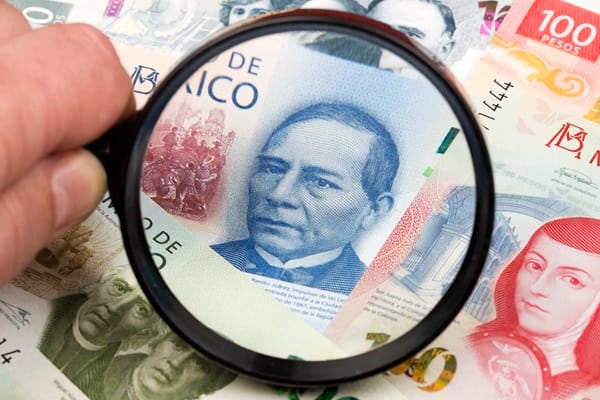Despite a challenging global landscape and the recent release of U.S. inflation data that exceeded expectations, the Mexican peso has demonstrated resilience, maintaining a relatively stable stance against the U.S. dollar.
This strength, albeit subtle, emerges in a context of persistent global economic uncertainty.
Today, the USD/MXN exchange rate registered a marginal change of -0.2%, a movement that, while indicating a slight appreciation of the peso, is more significant due to its ability to withstand the dollar’s upward pressure throughout the session.
This situation unfolds in a scenario where the U.S. currency has strengthened, driven by factors that typically pressure emerging market currencies like the Mexican peso.
Among the external factors, global trade tensions remain a catalyst for risk aversion.
Traditionally, in risk-off scenarios, the Mexican peso tends to depreciate. However, recently, and largely due to the postponement of generalized tariffs against Mexico, the currency has managed to contain the pressure.
Additionally, the domestic outlook is not without challenges. Recent economic data, particularly in the industrial and automotive sectors, has revealed fragility, raising concerns about the medium-term robustness of the Mexican economy. The weakness in these key sectors could be seen as a risk factor for the peso’s stability, yet, surprisingly, the currency has remained composed.
The most relevant trigger in recent hours has been the release of U.S. inflation data. Figures for headline inflation (3%) and, more notably, core inflation (3.3%), exceeded market expectations.
This inflationary surge, mainly driven by rising prices in food, auto insurance, and airline tickets, reinforces the likelihood of a prolonged restrictive monetary stance by the Federal Reserve (Fed). Historically, signals of a more aggressive Fed in its fight against inflation tend to strengthen the dollar, exerting downward pressure on the Mexican peso. Interestingly, this traditional correlation has not fully materialized today.
Looking ahead, the Mexican peso’s future performance is intrinsically linked to the evolution of global trade tensions. The direction of these geopolitical and economic conflicts will be crucial for peso volatility in the foreign exchange markets. In the meantime, the resilience shown by the Mexican currency today, in an adverse environment, stands out as a sign of relative strength amid global uncertainty.

